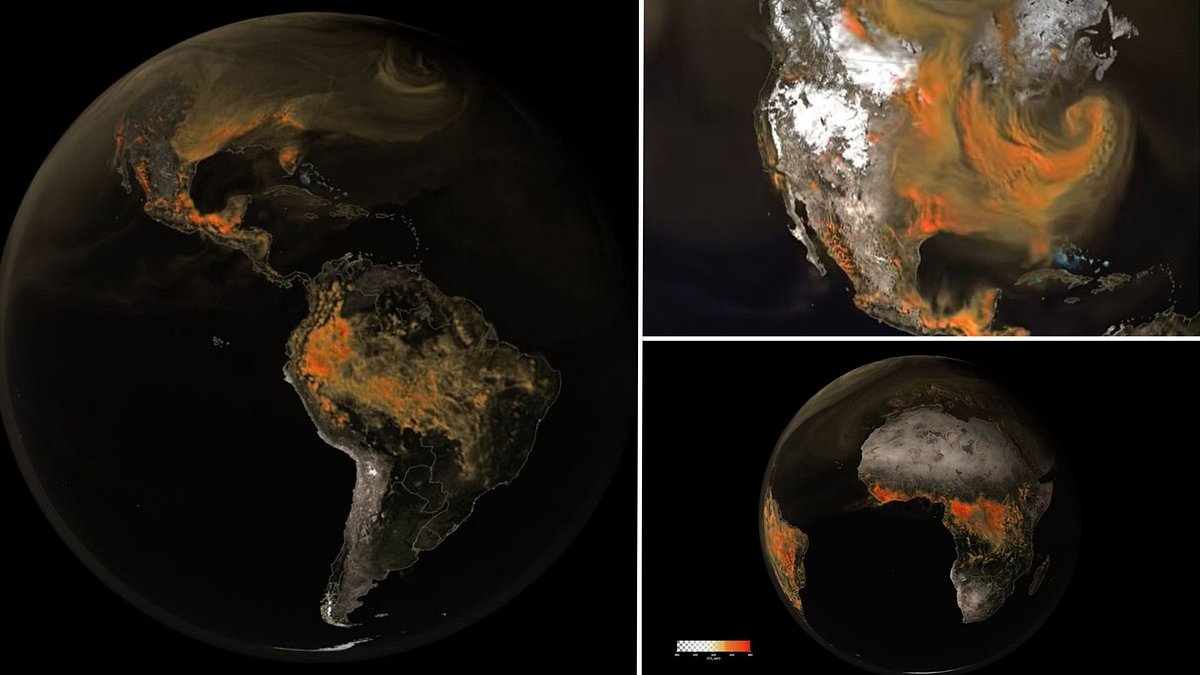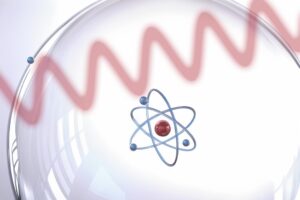- Amazing clip shows how greenhouse gases are released around the world
- READ MORE: Experts blame emissions for hottest day on RECORD
It is the most abundant greenhouse gas and is warming the Earth at an alarming rate.
Now, stunning new footage shows the turbulent masses of carbon dioxide (CO2) fueling climate change.
NASA satellites have detected swirls of gas being released by power plants, forest fires, livestock raised for meat and more.
Of course, CO2 is invisible, but experts at NASA’s Science Visualization Studio have made it bright orange so you can see it clearly.
In the clip, the gas appears in mesmerizing “pulses” as the world spins and day turns to night.
Click here to resize this module
“As policymakers and as scientists, we’re trying to explain where the carbon comes from and how that affects the planet,” said climate scientist Leslie Ott of NASA’s Goddard Space Flight Center in Greenbelt, Maryland.
“You see how everything is interconnected by these different climate patterns.”
Satellites in space have instruments called spectrometers that detect and monitor greenhouse gases such as CO2.
NASA’s global map shows CO2 concentrations as the gas moves through Earth’s atmosphere from January to March 2020, driven by wind and atmospheric circulation patterns.
As the video zooms in, you see emissions rising from power plants, fires and cities, then spreading across continents and oceans.
Click here to resize this module
Over the period, the majority of emissions from China, the US and South Asia came from power plants, industrial facilities and vehicles.
Meanwhile, in Africa and South America, most CO2 emissions come from fires, especially those related to land management, controlled agricultural burning and deforestation, along with the burning of fossil fuels, oil and coal.
Trees absorb and store CO2 from the air, so they release the gas in large quantities when burned.
In the video, CO2 appears in “ripples”, which is largely due to polluting human activity, which occurs mainly during the day.
For example, forest fires usually burn during the day and die out at night, while most vehicles (which release CO2 from their exhaust) also travel during the day.
Of course, CO2 isn’t the most potent greenhouse gas—it’s methane (CH4), which comes from burning fossil fuels, decomposing landfill waste, and more.
Scientists say that methane has a global warming potential that is 28 times that of CO2, although fortunately it is not emitted as abundantly as CO2.
However, scientists generally agree that Earth is headed for climate catastrophe because humans are failing to sufficiently curb emissions.
Eventually, the planet will become too warm due to the greenhouse effect, leading to widespread heat exhaustion and death, flooding of coastal cities due to ice buildup at the poles, and food shortages, they believe.
UN Secretary-General Antonio Guterres said we were “on the highway to climate hell with our foot on the gas.”



